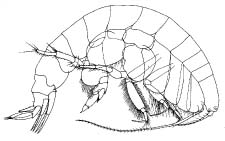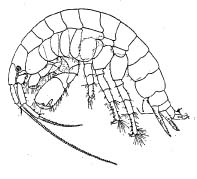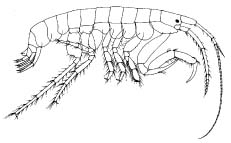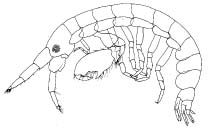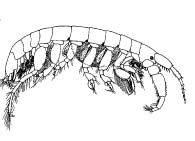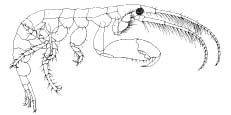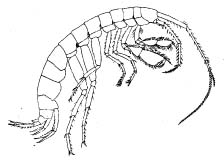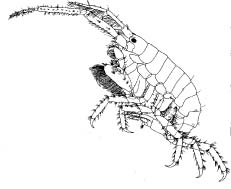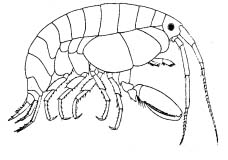Amphipod crustaceans are peracarid crustaceans, typically ranging in size from 2 to 50 mm, although a few may be larger. Amphipods are common in aquatic ecosystems throughout many parts of the world, inhabiting marine, brackish, and freshwater environments. A few species also live in terrestrial ecosystems. The order Amphipoda, which contains nearly 7,000 described species, is divided into three and sometimes four suborders: Gammaridea, Caprellidea, Hyperiidea, and Ingolfiellidea (only families from the first two suborders will be treated here). The latter, however, are probably highly specialized gammarideans.
Gammaridea, with more than 5500 described species, is not only the largest amphipod suborder but also contains all of the freshwater and subterranean taxa. Approximately 21 superfamily groups, 95 families (or family groups) and more than 1000 genera are recognized within this suborder.

